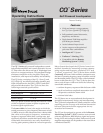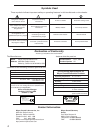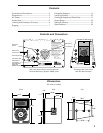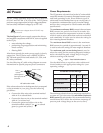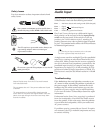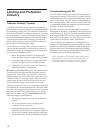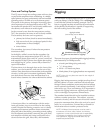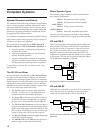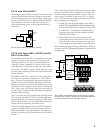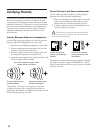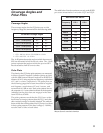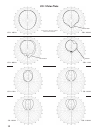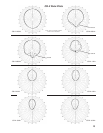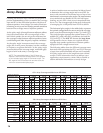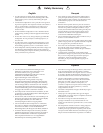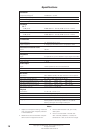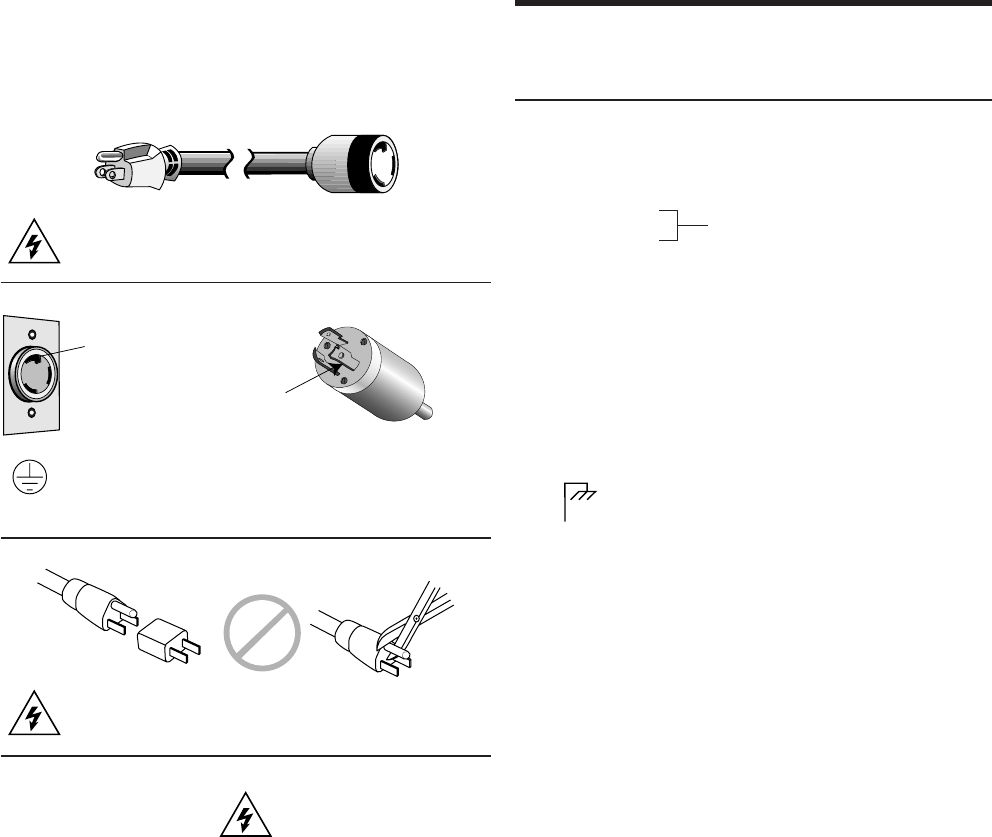
5
Safety Issues
Pay close attention to these important electrical and
safety issues.
Use a power cord adapter to drive the CQ from a
standard 3-prong outlet (NEMA 5-15R; 125 V max).
earth
ground
chassis
ground
The CQ requires a grounded outlet. Always use
a grounding adapter when connecting to
ungrounded outlets.
Do not use a ground-lifting adapter or cut the AC
cable ground pin.
Keep all liquids away from the CQ to avoid hazards
from electrical shock.
Do not operate the unit if the power cables are frayed
or broken.
Tie-wrap anchors on the amplifier chassis provide
strain relief for the power and signal cables. Insert the
plastic tie-wraps through the anchors and wrap them
around the cables.
Audio Input
The CQ presents a 10 kΩ input impedance to a three-pin
XLR connector wired with the following convention:
Pin 1 — 220 kΩ to chassis and earth ground (ESD clamped)
Pin 2 — Signal
Pin 3 — Signal
Case — Earth (AC) ground and chassis
Pins 2 and 3 carry the input as a differential signal;
their polarity can be reversed with the input polarity
switch on the user panel. If the switch is in the up
position, pin 2 is hot relative to pin 3, resulting in a
positive pressure wave when a positive signal is applied
to pin 2. Use standard audio cables with XLR connectors
for balanced signal sources.
Shorting an input connector pin to the case
can form a ground loop and cause hum.
A single source can drive multiple CQs with a paralleled
input loop, creating an unbuffered hardwired loop
connection. Make certain that the source equipment
can drive the total load impedance presented by the
paralleled input circuit. For example, since the input
impedance of a single CQ is 10 kΩ, cascading 20 CQs
produces a balanced input impedance of 500 Ω. If a
150 Ω source is used, the 500 Ω load results in a 2.28 dB
loss.
Troubleshooting
If the Active lamp does not light after connection to an
AC source for three seconds, the problem is probably in
the power supply. In the unlikely case that the circuit
breakers trip (the white center buttons pop out), the
amplifier or power supply may be malfunctioning.
Do not reset the breakers! Contact Meyer Sound for repair
information.
If abnormal noise (hum, hiss, popping) is produced
from the loudspeaker, disconnect the audio source
from the speaker. If the noise stops, then the problem
is not within the loudspeaker; check your audio and
AC power sources.
If problems persist, contact Meyer Sound. If repairs
are necessary, the CQ’s modular components are easy
to remove and ship.
Differential Inputs



